Hide an application on iPhone 5. The trick is how to quickly hide applications on an iPhone
No jailbreak needed.
Articles tagged "CHIP" include short recipes for activation little-known functions in iOS, OS X operating systems and Apple gadgets. If you already knew about this– we are proud to present you with a virtual “advanced user” medal. Let's give other readers the opportunity to receive such an award;)
Any iOS device has applications whose functionality remains controversial for the average user. Wallet, Reminders, Game Center, Podcasts, Tips, Compass, Watch– not everyone uses all this. But Apple is categorically against us interfering with the architecture operating system iOS and you cannot remove all this abundance of “vital software”.
You can't delete it, but can be hidden out of sight. In any case, this option is preferable to creating a separate “Junk” folder.
In order to hide icons of unused applications, do the following (we will hide the application Wallet):




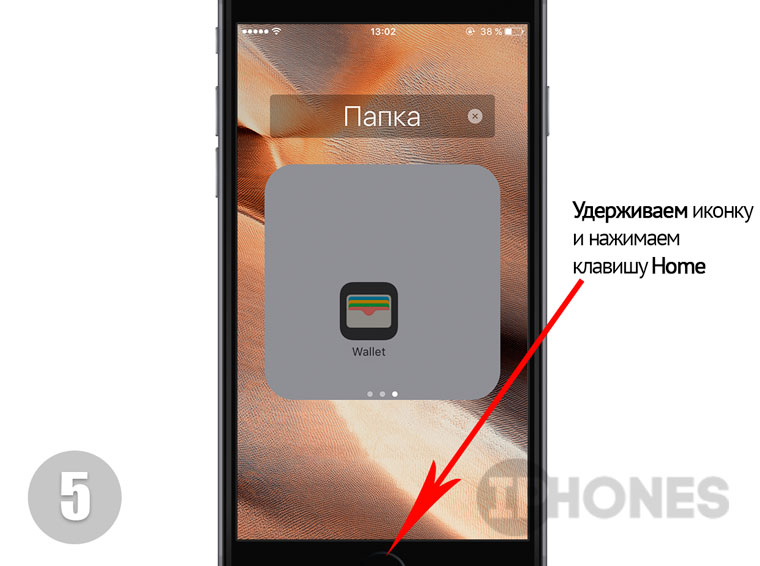

- Tap on the icon you plan to hide and hold your finger until you go to Edit mode(shaking icons).
- Without releasing your finger, drag the icon onto any other, thus creating new folder. Release your finger while inside the folder.
- Tap the app you plan to hide again and drag it to an adjacent empty page inside the folder. Release your finger.
- Touch the icon again and for a split second drag it to the far right of the folder, going beyond its boundaries.
- Then, without letting go of your finger, immediately move the icon to the center of the folder and click Home key. The application will disappear without a trace, slipping into the upper left corner. Attention: When you press the Home key, do not release your finger holding the application in the center of the folder.
For removal hidden application just go to Settings – General – Storage and iCloud – Manage(in the Storage category) and, having opened the required application, click on Uninstall a program.

Note: To launch hidden applications, use Spotlight search (swipe down from the center of the Springboard screen). To return everything to its place and see the “missing” applications again, just reboot iOS device.
A couple more tips on the topic:

Sometimes it is necessary to hide some files and applications from everything public access. If you use an iPhone, iPad or other products from Apple, then you have this opportunity.
videos on iPhone, iPad and iPoud touch
There are several ways to hide photos and videos from public access on an Apple device: using standard and third party applications, device settings, cloud storage.
This method involves transferring photos and videos to cloud servers any company that provides this feature, and after setting a password for the application that gives access to the files. For example, you can use Dropbox. The only disadvantage of this method is that to access photos and videos you will need a stable Internet connection, since the files will be stored not on the device, but on cloud servers.
- Go to the official Dropbox website (https://www.dropbox.com/referrals/NTEyOTg3MTEzOQ?src=global9), register there and download the app installer for your device.
- Once you've installed the Dropbox app and transferred all the necessary items into it, go to the Settings section.
- Go to the Passcode Lock section and activate the use of a password.
- Set a four-digit password by clicking the Change Passcode button.
- Enter four numbers to complete the process.
How to hide third-party and stock apps on iPhone, iPad and iPoud touch
The application icon from the device menu can be hidden in several ways: using third-party programs, creating multi-level folders, device settings.
Via folder
- Go to home page device menu and make sure that there is no free space. That is, you need to move 20 or 24 application icons to this tab.
- Click on any icon in the device menu and hold it for a few seconds so that the device enters edit mode.
- Move the icon of one application onto the icon of another to create a folder.
- Click on an application that is already in the folder and drag it to the second page of the folder, which remains empty for now.
- Start holding the app icon again and drag it off the edges of the folder that are on the right side of the screen. We do not remove our finger from the application icon.
- Now move the application icon to the center of the folder and, without removing your finger from it, press the “Home” button. If all actions are performed correctly, the icon will slide to the top of the screen and disappear from the device menu. The only disadvantage of this method is that after rebooting the device, the application icon will return to the menu.
Through multi-level folders
- Tap the icon and hold your finger on the screen for a few seconds to switch the device menu to edit mode.
- Long-press the application icon again and drag it onto any other application icon to create a folder.
- Exit the folder and create another folder by repeating the previous two steps with other applications.
- At the point when the creation of the second folder comes to an end and it begins to collapse, quickly grab the first folder and move it to the newly created folder.
- As a result, it turns out that when you are in the device menu, you cannot see what is in the double folder.
- The only disadvantage of this method is that if you open the first folder, the contents of the second will become noticeable.
Through device settings
- Open the Settings application.
- Let's move on to the "Basic" section.
- Let's move on to the "Limitations" subsection.
- Click the “Enable restrictions” button.
- Set a password or activate Touch function ID, if your device supports it.
- Let's return to the general list of restrictions. If you need to hide standard application, then move the corresponding slider opposite it.
- If you need to hide third-party applications, then scroll to the “Allowed Content” section and go to “Programs”.
- Enable the “Prohibit software” function that all icons third party programs disappeared from the menu of your device.
Through a third-party application and computer
For this method, you do not need to hack the device’s firmware using jailbreak; just download it to your computer or laptop from Mac version OS X no older than 10.11.4 Apple Configurator 2.2 application (
In today's article we will learn hide apps And put a folder within a folder(tautology is inevitable:). No jailbreak required.
Each a new version The iOS mobile operating system makes user interaction with a smartphone more practical and convenient. But if the final release was perfect and did not include bugs or shortcomings, life would be boring and uninteresting. All users iOS platforms are divided into the following categories: those who are satisfied with the standard set of functionality and those who are ready to fight justice to the last, installing all kinds of . There is another category - users looking for bugs and holes in order to improve the functionality of the device. Let's discuss these.
Hiding applications
Using third-party tweaks on a jailbroken device, you can hide the icons of applications that you want to hide from prying eyes. Who seeks will always find. Without complex manipulations, but only armed with a good reaction, you can hide any icon.
- 1. Go to the main (first) page Springboard.
2. Fill the window to capacity: depending on the device - 20 or 24 application icons.
3. The application you are going to hide must be located on any another page Springboard.
4. Press and hold your finger on the application icon (as when deleting). Without releasing your finger, move the icon to first page Springboard.
5. Without releasing the icon, point it at any application ( attention!– not a folder).
6. Continue holding your finger. The newly created folder will open. Do not release the icon, but display it beyond the borders gray background folders to the dock area(bottom panel with handset, mail and browser).
7. Once the application returns from the folder (the one you hovered the original icon over), release your finger from the Dock area. The icon will disappear.
You can find the icon only by searching from .

In order for hidden icons to reappear on the Springboard, just restart the device. But only you know about this :)
Folder within a folder
Familiar folders were not always present in the iOS mobile operating system. Up to iOS 4 iPhone and iPod owners were forced to place dozens of icons on 5-6 pages of Springboard.
Number of applications in App Store grows exponentially. Users with more than 200 apps on their devices find that even folders don't solve the clutter and difficulty of finding the app they want. By default, iOS does not provide folder-within-folder attachments, but it all depends solely on your reaction:
To carry out the operation of embedding a folder into a folder, we need two applications and a previously created folder.
- 1. Tap and hold the app with your finger (as if you were deleting).
2. Once the icon has increased in size and you can move it, point it to another application icon.
3. When the folder creation starts, release the moving icon and tap and hold on the required folder. Don't let go of your finger.
4. You can move the captured folder to the newly created one.
The peculiarity of such a move is the following: the folder nested inside is not visible until the directory is opened. By experimenting with folders, you can achieve something like this effect.

This bug (or hidden opportunity, which Apple is silent about) works on all iOS versions 7.0 and up to 8.1.3 .

In 2014, users of Apple products were enthusiastic about the news that it was now possible to hide photos on iPhones and iPads with iOS 8 - but their joy quickly gave way to disappointment. It turned out that this function on iOS works completely differently than on Windows for PC - hidden photos are still available to prying eyes.
When a user hides pictures on iPhone, they disappear from all categories (“ Years», « Moments», « Collections") and end up in a separate folder called " Hidden" This folder is not encrypted or password protected, so anyone who gets the opportunity to “crack” the phone will be able to see its contents.
Photos on iOS 8 are hidden like this:
Step 1. Launch the built-in application " Photo"on iPhone.
Step 2. Click " Choose» in the upper right corner of the screen and check the boxes for all the photos and videos you want to hide.

Step 4. Two lines will appear - at the bottom, find the option “ Hide» (« Hide»).
Step 5. Confirm that you want to hide the pictures - click " Hide photo» (« Hide Photos»).

Folder " Hidden» (« Hidden") appears in the list of albums, and it contains the user's most intimate pictures. There is no way to hide this folder on iPhone.
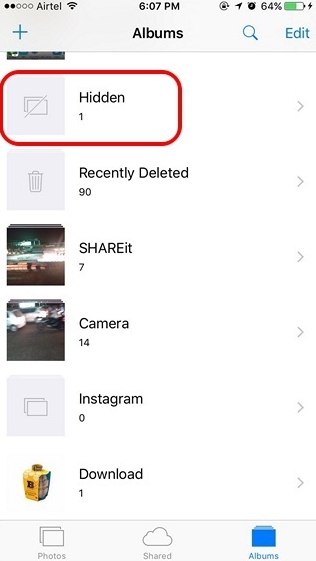
This method of hiding photos on iPhone is extremely dubious. It’s better not to hide pictures at all than to place them in a catalog whose name attracts attention. If the gadget falls into the hands of ill-wishers, the folder " Hidden", most likely, will be checked first - after all, it promises compromising evidence.
What apps allow you to hide photos on iPhone?
You can reliably hide photos on your iPhone using mobile applications from AppStore. There are now a lot of similar programs in the Apple store. Many of them have a level of conspiracy - they disguise themselves as calculators. Who would think that photographs could be hidden in a calculator?
A great utility for hiding data is Secret Calculator+, the “brainchild” of Chinese programmers. This application is free and very easy to use. After installation, it will be present on the desktop under the name Calculator+.
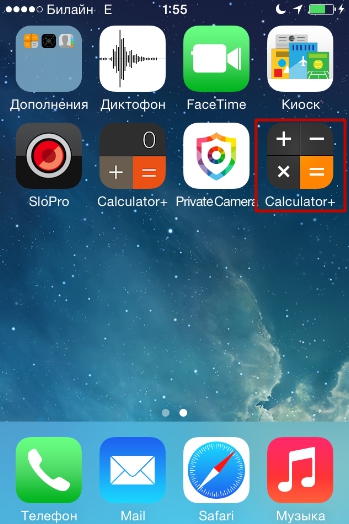
You can hide photos using this program like this:
Step 1. Launch the application and set a password. There seems to be no limit on password duration. We decided to stop at 20 characters.

When you are finished entering, press the % key.
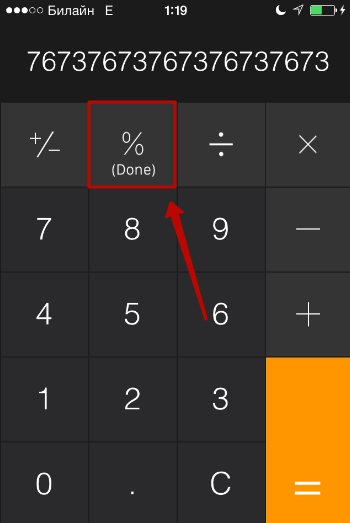
Then enter the password again, also placing a dot with the button with the percent symbol. If the password setting was successful, the following window will appear on the screen:
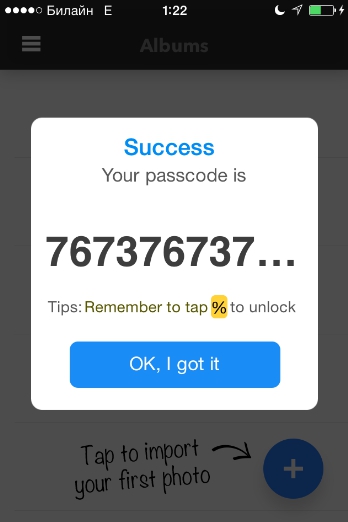
Click " OK, I got it».
Step 2. First you need to start a new album. Click on the “+” button at the bottom of the screen.

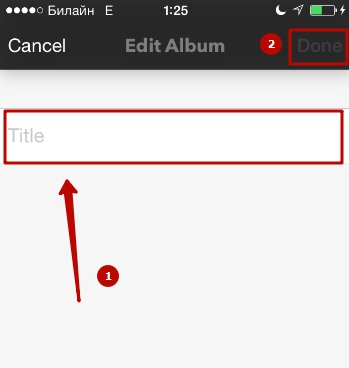
Step 3. Using the “+” button, add photos that you would like to hide from strangers.

Step 4. Proceed to the application " Photo» and delete hidden pictures from it.
After this you can return to the application Secret Calculator+ and make sure the photos are there. If you press a key with three horizontal lines, you will see: the program is capable of storing not only photos and videos, but also notes, contacts, passwords from Internet resources.

Storage Word files, Excel, Power Point doable full version applications. iPhone owners can purchase it for 229 rubles.
The main thing for the Secret Calculator+ user is not to fall victim to a clever disguise and not to uninstall the application inadvertently. Along with the program, all the photos that it stored will be irrevocably erased.
A worthy alternative to Secret Calculator+ is the application Private Camera. The operating principle of this program is different. It doesn't hide photos behind a calculator, but allows you to take photos directly from its interface. These pictures are not reflected in the application " Photo", however, if necessary, they can be uploaded (exported) there.

The program allows you to store under a password not only photos from your own camera, but also pictures taken earlier, copied from albums in the Photo application.
Owners of Apple equipment note the vulnerability of applications for hiding photos - despite the fact that the pictures are password protected, it is still possible to gain access to them Can. It is enough to use a computer with special software. For example, the iTools utility allows you to view all the contents of your iPhone - whether it is hidden or not.
For a user who is looking for a 100% photo privacy guarantee, the option is to use special applications Not suitable for storing photos. It is better for him to resort to the next method.
The most reliable way to hide photos
iPhone users should store their most intimate photo sessions in programs that support AES-256 encryption. The AES-256 encryption algorithm is one of the most reliable; It is widely used by banking structures and government organizations. AES-256 enabled apps collect photos (and other data) in containers – specially encrypted files. In iTools and similar programs the contents of the containers are not visible. There is only one way to access the content - by entering a password.
Mobile apps that can encrypt data include:
The uPassword program, which performed the same functions as 1Password, is no longer distributed through the AppStore.
Conclusion
Hiding photos using the iPhone's own tools is a “so-so” method. Photos that need to be hidden are simply collected in one folder, access to which is not protected in any way. To place pictures under a password, you should use one of the third-party applications - for example, Secret Calculator+.
Programs that support AES encryption can provide a 100% guarantee of information security. Such applications place photos in containers, the contents of which are not recognized by any special software.
Sometimes you need to make one or another application icon temporarily disappear from the device screen. For example, in order to avoid it being launched by a child. Or if you plan to give the device to someone for temporary use. And this can be done using iOS itself, without an installed jailbreak.
To do this you need to go to " Settings» -> « Basic» -> « Restrictions" You need to enable restrictions and specify a password. Now it is possible to remove some of the default applications from the screen. Such as Camera, FaceTime, Safari. There is also a ban on installing and uninstalling software, and the use of Siri.

As for hiding applications installed by the user himself, to do this you need to use the “ Allowed Content", in which the section " Programs».

Unfortunately, the user does not have the ability to hide applications “by name”. Only by their rating in the App Store. If you specify “ Ban software", then everything will be hidden installed programs. There are exactly the same sections for books, films and music.
Important!
The technique described above may not be the most elegant and convenient, but it is quite functional. However, it has one rather unpleasant drawback - if the hidden thing was placed in a folder, then after disclosure any preliminary grouping will be lost, the former hidden apps will simply end up on the desktop.
If you find an error, please highlight a piece of text and click Ctrl+Enter.
I use Apple technology since the “classical era”, since 1995. During this period, I saw more than one sudden and significant (and sometimes downright shocking) “revolution” in the development of the company. Which, despite everything, did not lose its charm. I believe that it will continue to be so.



